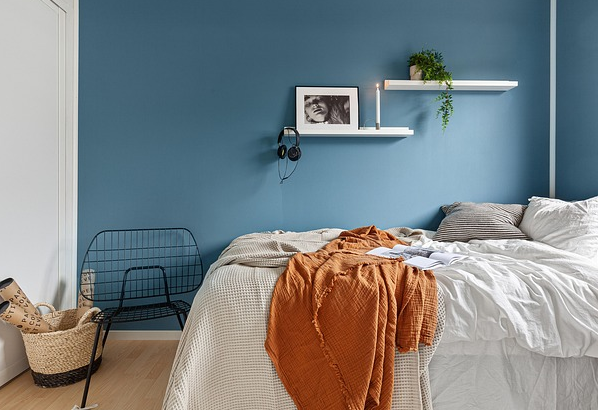Currency


Sleep is a major event in life, and the bed is our indispensable 'old buddy' every day. But the problem is that sometimes after sleeping in for a long time, the bed becomes as soft as cotton candy, and even flipping over can sink in. The whole person feels like they have fallen into a black hole, and when they wake up, they don't feel refreshed, but rather have back pain and soreness. So, the question is in front of us - how to make the bed firm?
Don't worry, we're not here to sell secrets or deceive everyone into buying new beds. As a group of people who enjoy "tinkering", we have researched various methods, from simple mattress adjustments to bold bed frame reinforcement. Today, we will share with you a complete "hardening engineering guide". If we are also struggling with the problem of 'bed too soft', then this article can find a reliable solution.
Why Make the Bed Harder?
Firstly, we need to clarify why some people ask how to make a bed firm?
Lack of guide: A smooth and collapsed bed can easily deform the spine, causing high strain on the lumbar spine. Waking up inside the morning is even more tiring than no longer slumbering in any respect.
Poor durability: If the mattress is too tender, it is able to imply structural issues, and through the years it will become increasingly more weak.
Habit issue: Some people are born with a preference for a harder bed, sleeping on it makes them feel straight and energetic.
Health considerations: For people who are prone to lower back pain and hunchback, a hard bed can actually alleviate discomfort.
So, it's not that we insist on tinkering when we have nothing to do, but rather that some people really need a more solid and firm sleeping environment.

Common Reasons for Soft Beds
Earlier than discussing answers, we need to first become aware of the root cause of the trouble. In any other case, it's like taking painkillers for a headache, treating the signs but now not the foundation motive.
Bed frame cutting corners: a few beds are designed to keep substances, with thin forums and fewer connectors, ensuing in terrible ordinary load-bearing ability.
Loosening of screws: Over time, the connection parts of the bed become loose, the support force decreases, and the entire bed becomes "soft and prone".
Bed board too thin: Some bed boards use plywood, which is as thin as paper and bends when pressed.
Mattress collapse: If the mattress quality is poor or has been used for too long, the sleep experience will naturally be "weak and powerless".
Knowing these, we can prescribe the right medicine and truly solve the problem of how to make the bed firm.
The Most Practical Way to Make the Bed Harder
1. Reinstall and reinforce the bed frame, and conduct a physical examination
The bed frame is the skeleton of the entire bed. If the skeleton is not good, even the best mattress is useless. We can:
Reassemble: Disassemble the bed and check if all connecting components are securely fastened.
Add nails and glue: Add nails or wood glue to weak areas.
Using iron frames and corner brackets: Especially at the corners of the bed and stress points, adding metal corner brackets and screws instantly improves the firmness.
In summary, if the bed is not sturdy, it is likely due to loose joints. Strengthening it is like giving the bed a rehabilitation therapy.
2. Increase bed board support
If the bed board is too thin, we can:
Add wooden blocks under the bed board (the thicker, the stronger).
Or simply replace it with thick solid wood panels.
If we have good hands-on ability, we can refer to the installation method of solid wood beds, use hooks and mortise and tenon structures more often, rather than relying solely on small hardware.
We have experimented with it ourselves, and even with just a few horizontal wooden blocks, the effect is immediate.

3. Utilize mattress accessories
Sometimes the problem is not with the bed frame, but with the mattress itself being too soft. At this point, we can use some 'mattress black technology':
Topper mattress: There are foam or latex mattresses on the market specifically to harden the bed, which can be improved by directly spreading on them.
Hard board: The simplest and most rough method is to add a layer of wooden board or bamboo mat between the mattress and the bed board, which instantly stiffens.
Swap mattress position: Some mattresses have a double-sided design, and when turned over, it may be the hard side.
This trick is suitable for people who don't want to make big moves, as it saves money and has quick results.
4. Use hardware to increase stability
We have to admit that thicker connectors are more robust. So:
Adding a few more screws in the same position doubles the sense of security.
Use embedded structure to make the bed more evenly stressed.
Comparing hooks and crescent hooks: From a mechanical perspective, hooks are subjected to positive upward and downward forces, resulting in better stability; However, crescent hooks are often subjected to lateral forces and are prone to loosening.
This part may sound a bit like a woodworking class, but once we learn it, we will find that the firmness of the bed depends entirely on the selection and installation of hardware.
5. DIY modification tools
To seriously tinker, tools are essential:
Electric drill: It's all about drilling holes with screws.
Woodworking drill bit: helps us accurately locate.
Round tenon and wood glue: an excellent partner for strengthening structures.
Don't underestimate these tools, with them, we are 'home bed frame repair engineers'.
Summary of Our Personal Experience After Trying It Out
We really tried it ourselves. The process is roughly like this:
At first, the bed board creaked and felt like it was about to collapse.
We first used an electric drill to remove the loose screws, and then replaced them with thicker new screws.
Then two timber squares have been added within the center of the bed, making the complete mattress as solid as Mount Tai in an instant.
Eventually, a difficult timber board was located under the mattress, which significantly progressed the snoozing revel in and relieved the soreness inside the waist.
Summary: The technique isn't always complex, it just calls for a few patience and energy.

Additional Tips
Ordinary inspection: simply due to the fact the bed is hooked up, the whole lot will be exceptional. Regularly tightening screws can extend its lifespan.
Avoid overweight: The bed also has a load-bearing limit, don't use it as a stage to jump.
Combining health needs: If our lumbar spine is not good, a hard bed is more suitable; If it is a pregnant woman or child, it is more comfortable to be moderately soft.
When Should I Switch to a New Bed?
To be honest, sometimes no matter how much effort is put into it, it's impossible to save an 'elderly bed'. for example
The wood has cracked and cannot be repaired;
The metal frame is severely deformed;
The mattress collapsed, like sleeping in the crevices of a sofa.
At this point, the answer is simple: instead of struggling with how to make the bed firm, it's better to switch to a new bed, which is worry free and healthy.
Conclusion
To sum up, how to make a bed firm is not a difficult problem. It's nothing but three paths:
Repairing bed frame - reassembling, reinforcing, and replacing hardware;
Replace the bed board - thicker and more sturdy;
Adjust the mattress - add a hard pad, wooden board, or replace it directly.
We tossed around all the way and found that a hard bed not only brings physical relaxation, but also a sense of psychological security. After all, flipping over at night no longer worries about the creaking of the bed, that sense of security is really more effective than any sleep aid music.
So, if we are also struggling with a bed that is too soft, we may want to try the methods we share. Friends with strong hands-on abilities can also enjoy the fun of DIY. A final reminder: Don't be afraid of trouble. Sleep is the top priority in life. Investing a little time and energy will result in a fully energized self every day.
Erreur de format d'e-mail
emailCannotEmpty
emailDoesExist
pwdLetterLimtTip
inconsistentPwd
pwdLetterLimtTip
inconsistentPwd